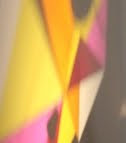what they would see if men were the size of bees...

in maurice maeterlinck's the life of bees, he imagines what a beehive would look like to a man the size of a worker bee. in juan antonio ramirez's book the beehive metaphor, he suggests that the forms and mechanics of manmade beekeeper's beehives influenced a number of modern architects, such as le corbusier, antonio gaudi, peter behrens, and bruno taut. since maeterlinck's text is quoted in ramirez's book, one is given a kind of permission to not only equate maeterlinck's text with a natural hive, but also a man made one. so one can look at the RPPC above (from eastern europe circa 1920), and imagine one of the men shrunken down to the size of a bee, given wings, and drifting inside. maeterlinck's description feels a bit psychedelic, and suggests the architecture of bruce goff as written about by jose luis borges...:
from the very top of a cupola greater in size than that in st. peter's in rome right down to the ground, enormous walls of wax, vertical, double and parallel, descend; enormous geometrical constructions suspended in the darkness and emptiness... each one of these walls, made of a substance which is still fresh, virginal, silvery and sweet-smelling is formed of thousands of cells containing sufficient food to feed an entire population for several weeks. here we can see the brilliant red, yellow, pink, and black stains caused by the pollen, the love juice of all the spring flowers in the transparent cells. all around, in long, magnificent, golden pendants, in rigid, immobile folds, the april honey lies in its twenty thousand sealed reservoirs which will only be opened in time of extreme need...
ramirez's book is full of interesting facts related to the history of bee keeping as well as architecture, and he draws lines between things in a much more intuitive way than most academics writing about architecture (i haven't read many who have written about bees...). i would highly recommend the book to anyone interested in such a personal approach to the intersection of seemingly disconnected histories.
Labels: antonio gaudi, bees, bruce goff, bruno taut, jose luis borges, le corbusier, maurice maeterlinck

2 Comments:
"You know what he [Eckart] said? The only thing that burns in Hell is the part of you that won't let go of your life; your memories, your attachments. They burn 'em all away. But they're not punishing you, he said. They're freeing your soul. ... If you're frightened of dying and holding on, you'll see devils tearing your life away. But if you've made your peace then the devils are really angels, freeing you from the Earth" (Rubin 1990, p. 82).
Jorge, not Jose
Post a Comment
<< Home